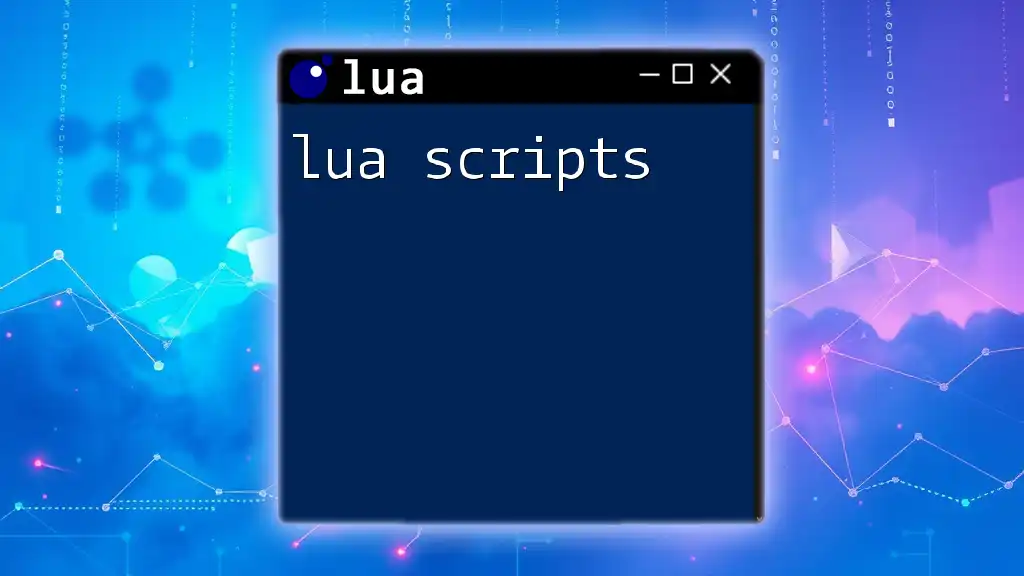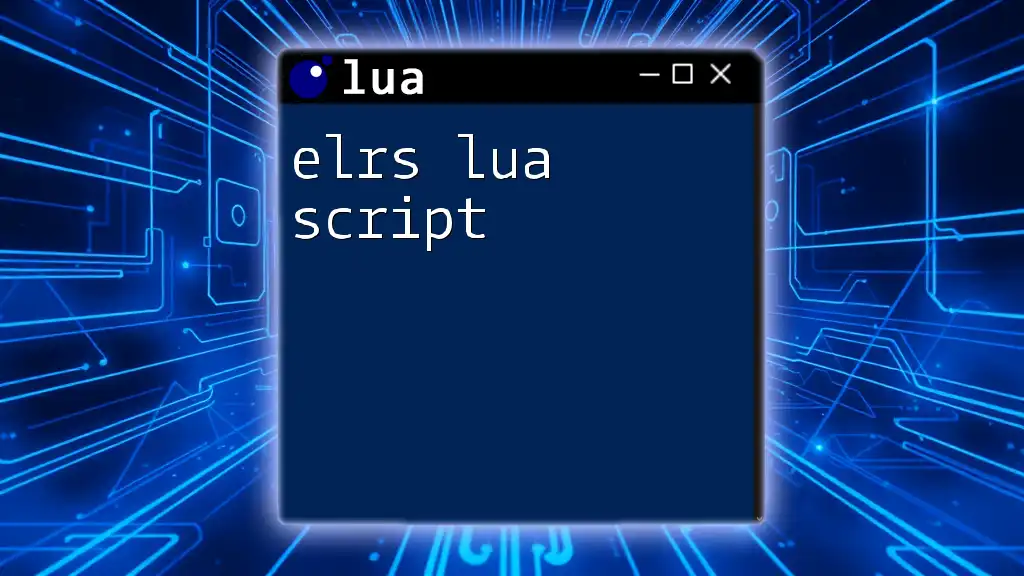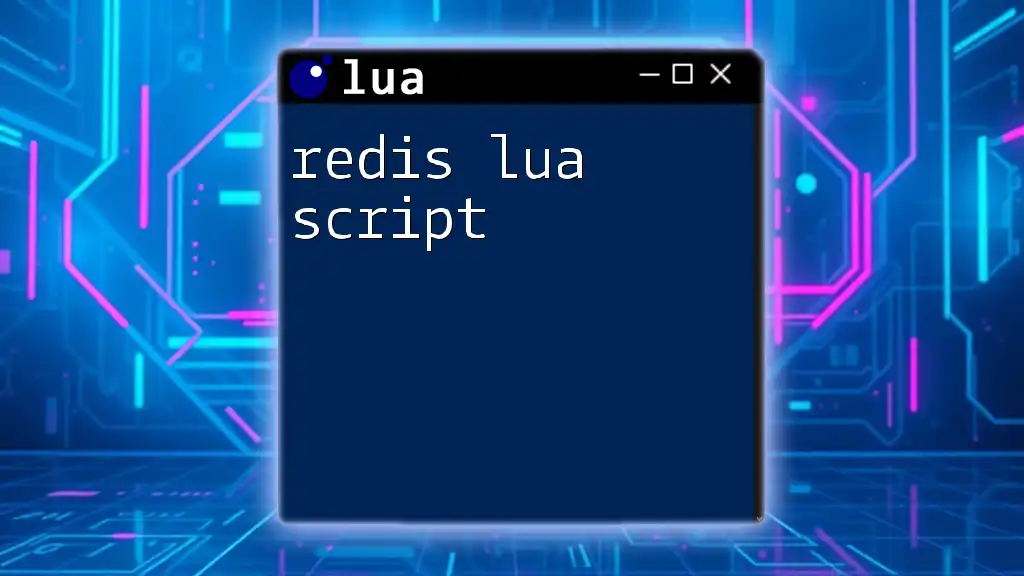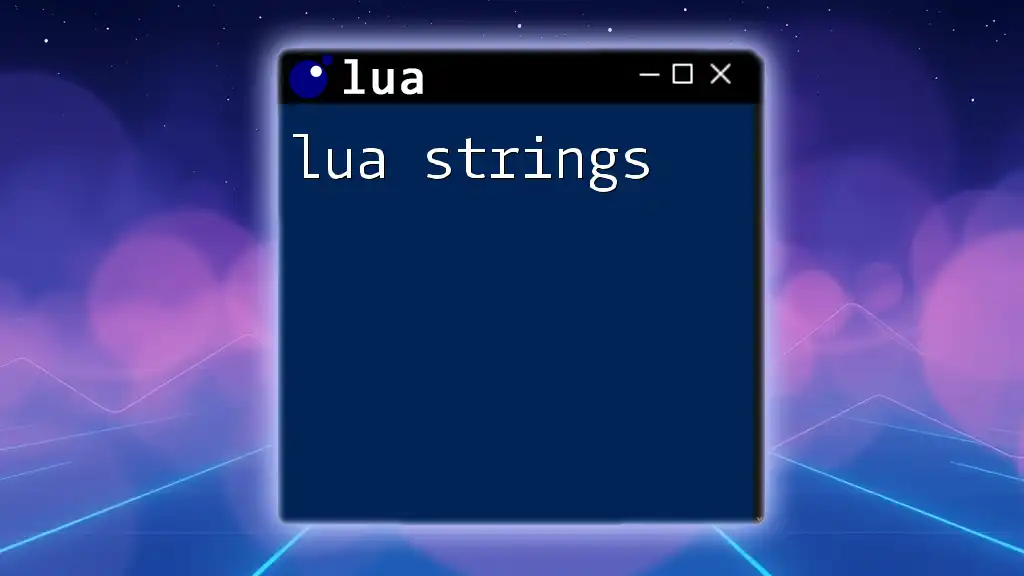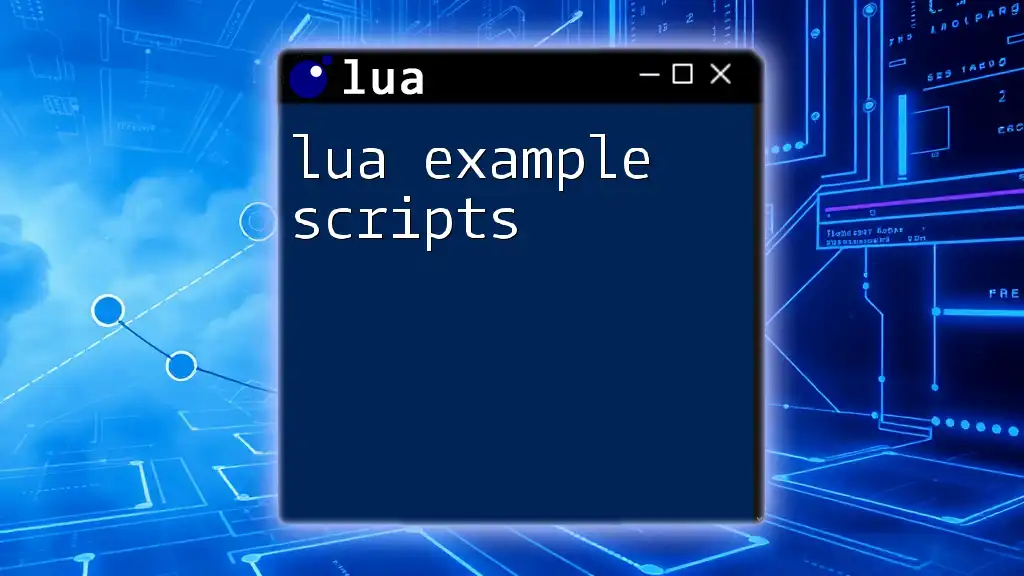Lua scripts are lightweight and efficient programs written in the Lua programming language, designed to automate tasks or perform specific functions within applications. Here's a simple code snippet that demonstrates how to print "Hello, World!" in Lua:
print("Hello, World!")
What is Lua?
Lua is a lightweight, high-level scripting language designed primarily for embedded use in applications. Originating from Brazil in the early 1990s, it’s renowned for its simplicity and flexibility, making it a popular choice for game development, web applications, and other automation tasks.
Key Features of Lua
Lua stands out due to its unique characteristics:
- Lightweight and Embeddable: Lua's footprint is small, allowing it to be embedded in applications without significant overhead.
- Simple Syntax: The syntax of Lua is straightforward, making it approachable for beginners and efficient for experienced programmers.
- High Performance: Lua is optimized for performance, making it an excellent choice for fast-paced applications.
- Portability: Lua scripts can run on various platforms without modification, enhancing their usability across different environments.
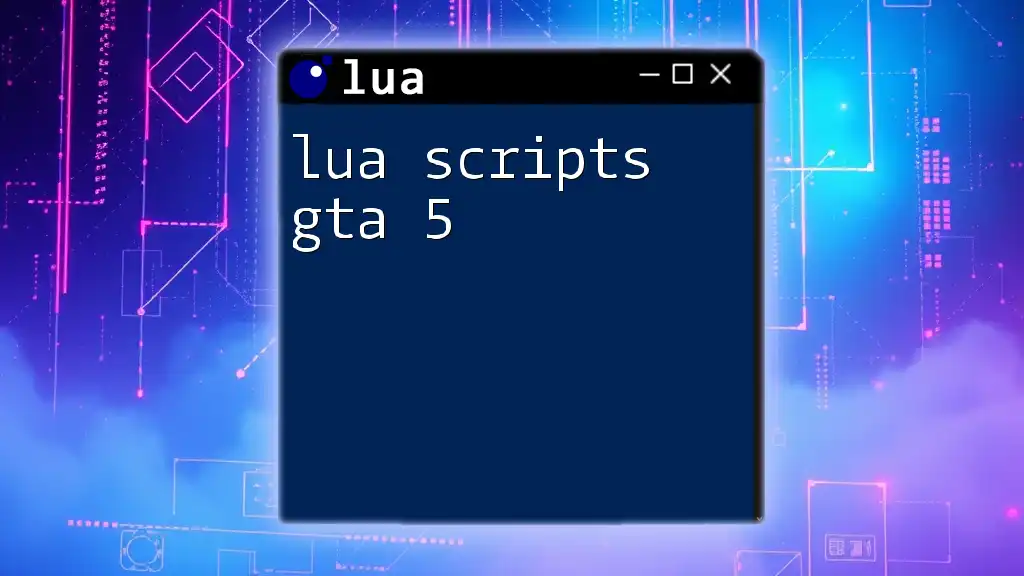
Understanding Lua Scripts
What is a Lua Script?
A Lua script is essentially a text file containing a series of Lua commands and functions that are executed in order. These scripts are saved with the `.lua` file extension and can be run using the Lua interpreter.
Benefits of Using Lua Scripts
There are numerous advantages to using Lua scripts, including:
- Ease of Learning: The language's simplicity allows new users to grasp concepts quickly, making it popular for educational purposes.
- Versatility: Lua can be used for developing games (like Roblox and CryEngine), web servers, and even simple automation tasks, showcasing its wide-ranging applicability.

Getting Started with Lua Scripting
Setting Up Your Environment
To start scripting in Lua, you need to set up your development environment. Recommended tools include:
- LuaRocks: The package manager for Lua that helps manage libraries and dependencies.
- ZeroBrane Studio: A lightweight IDE specifically designed for Lua.
Installation is straightforward and can typically be found on the respective websites, where documentation guides users through setup.
Basic Script Structure
A basic Lua script follows a simple structure. Here’s an example of a minimal script:
print("Hello, World!")
When you run this script in the Lua interpreter, it will display "Hello, World!" on the screen.

Core Concepts of Lua Scripting
Variables and Data Types
In Lua, variables are used to store data. The language supports several fundamental data types:
- nil: Represents an absence of value.
- boolean: Represents `true` or `false`.
- number: Represents numeric values.
- string: Represents textual data.
- table: A complex data structure that can represent arrays, dictionaries, or other collections.
- function: Represents executable code blocks.
Here’s an example demonstrating variable declaration and data types:
local name = "Lua Programmer"
local age = 25
local isAdult = true
Control Structures
Conditional Statements in Lua allow developers to execute code based on certain conditions. The primary syntax includes the `if`, `elseif`, and `else` statements. For instance:
if age > 18 then
print("Adult")
else
print("Minor")
end
Loops are fundamental for executing code multiple times. Lua supports different types of loops:
- for loop:
for i = 1, 5 do
print(i)
end
- while loop:
local count = 1
while count <= 5 do
print(count)
count = count + 1
end
- repeat-until loop:
local count = 1
repeat
print(count)
count = count + 1
until count > 5

Functions in Lua Scripts
Creating Functions
Functions in Lua are defined using the `function` keyword. Functions can take parameters and return values. Here’s how you create a simple function:
function add(a, b)
return a + b
end
print(add(5, 3)) -- Output: 8
Scopes and Closures
Understanding scopes is crucial in Lua scripting. Variables can be local (accessible only within the block they are defined) or global (accessible throughout the entire script). Lua also supports closures, which are functions that capture the variables from their surrounding environment.
Here’s a simple closure example:
function createCounter()
local count = 0
return function()
count = count + 1
return count
end
end
local counter = createCounter()
print(counter()) -- Output: 1
print(counter()) -- Output: 2
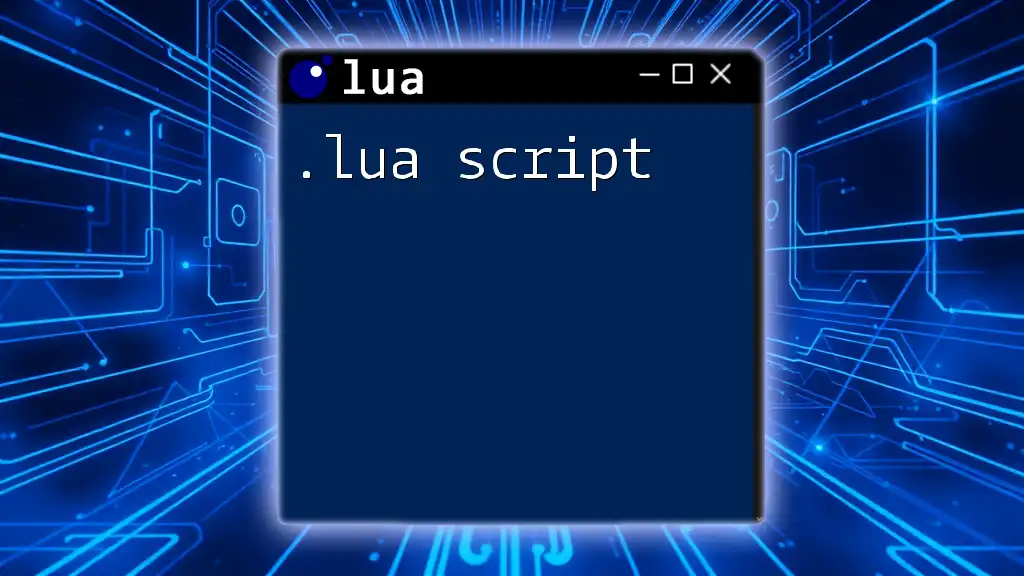
Tables: The Heart of Lua
What are Tables?
Tables are the primary data structure in Lua, serving as both arrays and dictionaries. They allow developers to create complex data models. For instance, you can create a simple table like this:
local person = {name = "John", age = 30}
Manipulating Tables
Tables can be easily manipulated in Lua. You can add elements, access them, and even delete them. Here’s how to iterate through a table:
for key, value in pairs(person) do
print(key .. ": " .. value)
end
This snippet will output each key-value pair in the `person` table.

Error Handling in Lua
Common Error Types
Understanding how to handle errors is critical. In Lua, there are primarily two types of errors: syntax errors (which occur during parsing) and runtime errors (which occur during execution).
Using `pcall` for Error Handling
The function `pcall` (protected call) can be used to execute a function in protected mode, allowing you to handle errors gracefully. Here’s an example:
local status, err = pcall(function()
error("An error occurred!")
end)
print(status, err) -- Output: false, An error occurred!
In this case, instead of halting execution, the error is caught, allowing the developer to handle it appropriately.
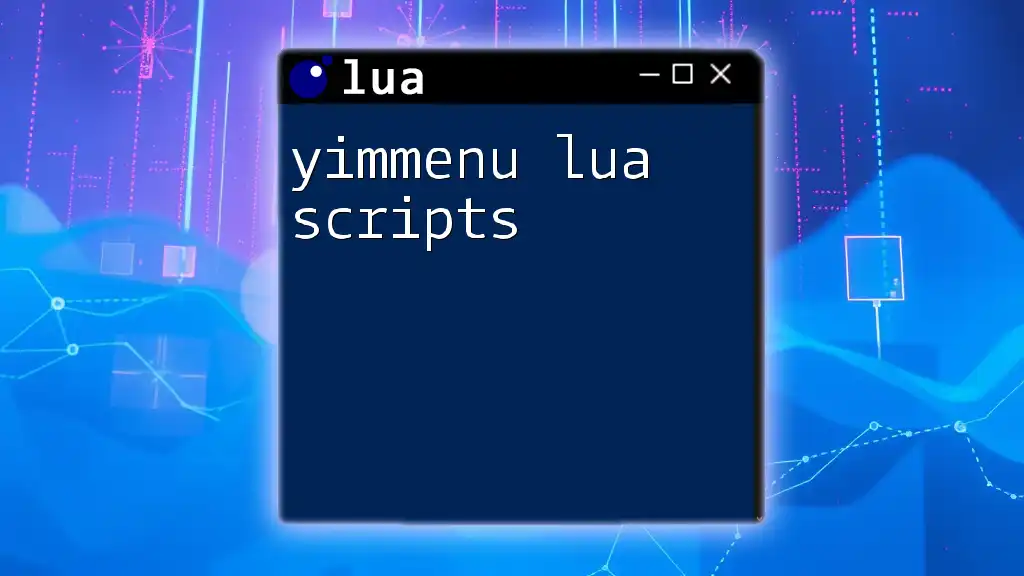
Example Projects to Practice Lua Scripts
Simple Calculator
Creating a basic calculator is a great way to practice Lua scripting. You can create functions for operations like addition, subtraction, multiplication, and division.
function add(a, b) return a + b end
function subtract(a, b) return a - b end
function multiply(a, b) return a * b end
function divide(a, b) return a / b end
Basic Game Script
Writing a simple guessing game can provide excellent hands-on experience with Lua scripting. A basic structure might look like this:
local secretNumber = math.random(1, 10)
local guess
repeat
print("Guess a number between 1 and 10:")
guess = tonumber(io.read())
if guess < secretNumber then
print("Too low!")
elseif guess > secretNumber then
print("Too high!")
else
print("Congratulations! You guessed it.")
end
until guess == secretNumber
Web Development Example
Lua can also be utilized in web applications. Using a framework like Lapis allows developers to create dynamic websites seamlessly, showcasing Lua’s versatility beyond traditional desktop applications.
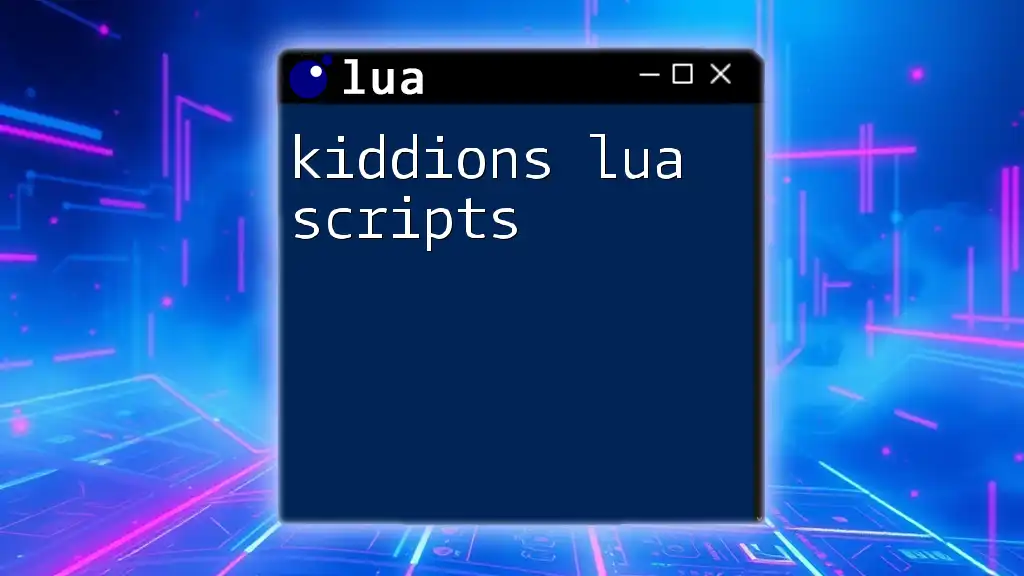
Best Practices for Lua Scripting
Code Readability
Writing readable code is vital for maintenance and collaboration. Use clear variable names, indentation, and spacing to enhance readability.
Documentation
Incorporate comments and documentation directly within your scripts. This practice not only helps others understand your code but also aids in clarifying your thought process when revisiting your code later.
Performance Optimization
To write efficient Lua scripts, avoid unnecessary complexity. Profile and optimize code for performance, particularly in memory management and function calls, which can significantly impact execution speed.
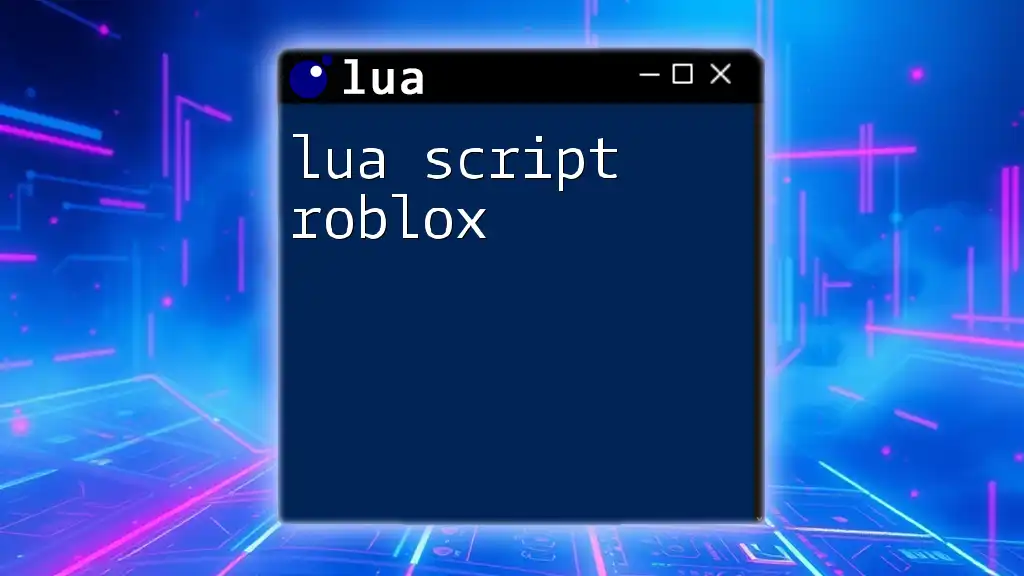
Conclusion
Lua scripts offer a versatile and powerful tool for a variety of applications. They are especially valuable in game development, automation, and web applications. With a focus on coding best practices and continual learning, you can leverage the full potential of Lua scripting. Start experimenting with Lua today, and explore the many possibilities it offers!

Additional Resources
To further enhance your Lua scripting knowledge, consider exploring the following resources:
- The official Lua website and documentation for foundational concepts.
- Recommended books and tutorials that provide deeper dives into advanced aspects of Lua.
Embrace the world of Lua scripts and unlock new possibilities in your programming journey!

